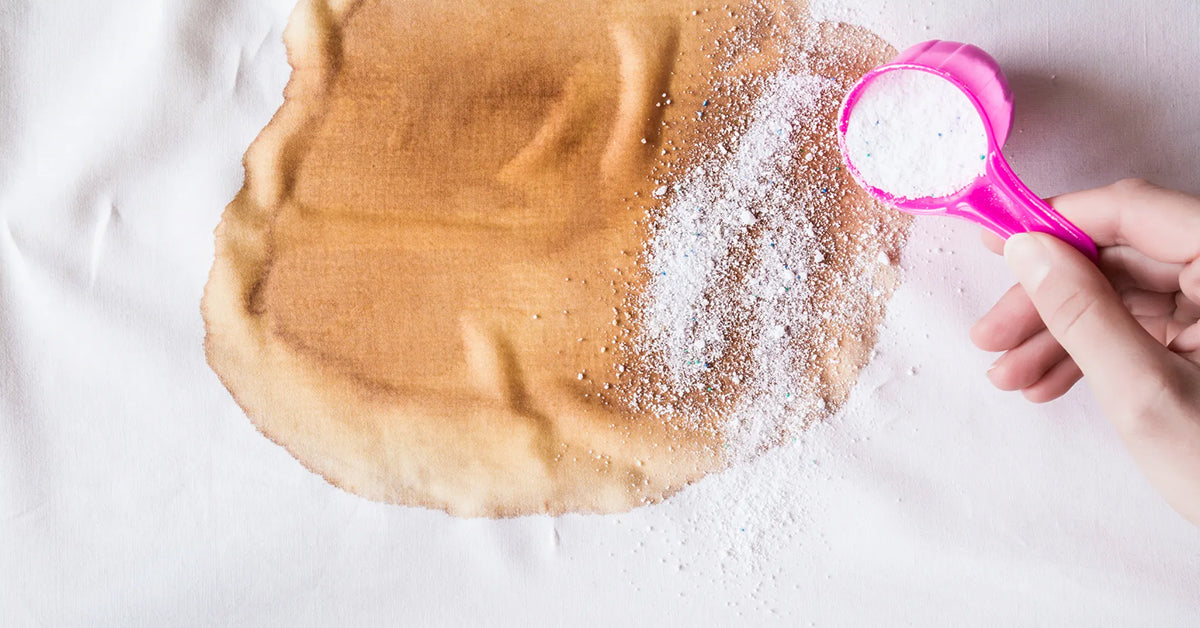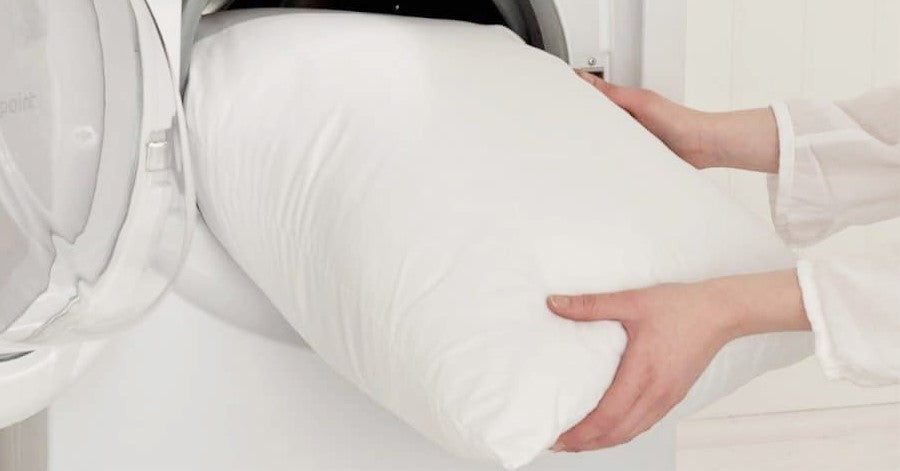Pillowcases are essential to our daily lives, providing comfort and support as we rest our heads each night. However, they often bear the brunt of our body's natural processes, including the unavoidable accumulation of sweat stains. These unsightly marks not only affect the appearance of our bedding but can also be challenging to remove. In this comprehensive guide, we will delve into the reasons behind sweat stains on pillowcases, explore various methods for their removal, and provide prevention tips.
How Does Sweat Get Onto Pillowcases?
Understanding the mechanisms of how sweat infiltrates our pillowcases is crucial in addressing the issue effectively. Sweat, a combination of water, salt, and other substances, is a natural result of the body's cooling process. When we sleep, our bodies regulate temperature, leading to sweat secretion. This sweat can transfer onto the pillowcases as we rest our heads on our pillows, leaving behind stubborn stains.
How To Remove Sweat Stains From Pillowcases Without Vinegar?
Vinegar is a popular household ingredient known for its stain-removing properties. However, there are effective options for those sensitive to its strong scent or looking for alternative methods.
- One such method involves the use of lemon juice.
- Mix lemon juice with salt to create a paste and apply it to the sweat stains.
- Allow it to sit briefly before washing the pillowcases as usual. Lemon's natural acidity can help break down the stains without needing vinegar.
How To Remove Sweat Stains From Pillowcases With Baking Soda?
Baking soda, a versatile and readily available household item, is another excellent alternative for removing sweat stains.
- Mix baking soda with water and apply a paste directly to the stains.
- Let it sit for about 30 minutes before laundering the pillowcases.
- The gentle, abrasive nature of baking soda helps lift the stains without causing damage to the fabric.
How To Remove Sweat Stains From Pillowcases Naturally?
For those who prefer natural and eco-friendly solutions, there are several methods to tackle sweat stains.
- One practical approach involves the use of hydrogen peroxide and dish soap.
- Mix equal parts of hydrogen peroxide and dish soap, apply the mixture to the stains, and let it sit for at least 30 minutes.
- This combination helps break down the stains without resorting to harsh chemicals.
What Causes Yellow Stains On Pillow Cases?
Yellow stains on pillowcases are often a result of a combination of sweat, body oils, and skin cells. As these substances accumulate over time, they can oxidise and turn yellow. Additionally, if pillowcases are not cleaned regularly, bacteria and dust mites can contribute to the discolouration. Understanding the root causes of yellow stains is essential in implementing effective stain removal methods.

How To Remove Sweat Stains From Colored Pillowcases?
Coloured pillowcases require special care to prevent colour fading or damage during stain removal.
- To remove sweat stains from coloured pillowcases, consider using cold water and mild detergent.
- Gently dab at the stains with a clean cloth or sponge to avoid spreading the discolouration.
- It's crucial to test any cleaning solution on a small, inconspicuous area first to ensure it won't affect the fabric's colour.
How To Whiten Pillow Cases Without Bleach?
While bleach is a potent whitening agent, it can be harsh on fabrics and cause damage over time.
- For those seeking gentler alternatives, consider using oxygen bleach or borax.
- These substances are milder than chlorine bleach and can effectively whiten pillowcases without compromising their integrity.
- Add a cup of oxygen bleach or borax to your regular laundry detergent when washing white pillowcases to maintain their brightness.
How To Remove Body Oil Stains From Pillowcases?
Body oils and sweat can contribute to stubborn stains on pillowcases.
- To tackle body oil stains, pretreat the affected areas with cornstarch and water.
- Allow the paste to sit for about 15 minutes before laundering the pillowcases.
- Cornstarch acts as an absorbent, helping lift the oils from the fabric.
- Additionally, enzyme-based laundry detergents can effectively break down body oils during washing.
How to Prevent Sweat From Getting Onto Pillowcases?
Prevention is critical to maintaining clean and stain-free pillowcases. Consider these tips to prevent sweat from transferring onto your bedding:
- Use a Pillowcase Barrier: Place a thin, absorbent cloth or towel over your pillow before putting it on the pillowcase. This additional layer can help absorb sweat, preventing it from reaching the pillowcase.
- Choose Moisture-Wicking Bedding: Opt for pillowcases and sheets made from moisture-wicking materials, such as cotton or linen. These fabrics draw moisture away from the body, reducing the likelihood of sweat stains.
- Practice Good Sleep Hygiene: Shower before bedtime to remove excess oils and sweat from your body. This simple step can significantly reduce the amount of sweat on your pillowcases.
- Rotate Pillowcases Regularly: Changing your pillowcases frequently, at least once or twice a week, can help prevent the buildup of sweat and oils. This is especially important for individuals prone to sweating during sleep.
Conclusion
Maintaining clean and stain-free satin silk pillowcases is not only essential for aesthetics but also for overall sleep hygiene. By understanding the causes of sweat stains, employing effective removal methods, and implementing preventative measures, you can ensure your bedding remains fresh and inviting. Experiment with different stain removal techniques to find the best pillowcase material and preferences.
FAQs
How often should pillowcases be cleaned?
Pillowcases should be cleaned every one to two weeks. However, if you sweat heavily or have skin conditions, more frequent washing may be necessary to prevent the buildup of sweat and oils.
Can sweat stains be prevented entirely?
While complete prevention may be challenging, implementing good sleep hygiene practices and using protective measures, such as a barrier cloth or moisture-wicking bedding, can significantly reduce the likelihood of sweat stains.
Are all pillowcase materials equal in stain resistance?
No, different materials have varying levels of stain resistance. Natural fibres like cotton and linen are more breathable but may be prone to staining. Synthetic materials like polyester may resist stains better but must be more comfortable. Choose pillowcases based on your priorities for comfort and stain resistance.



